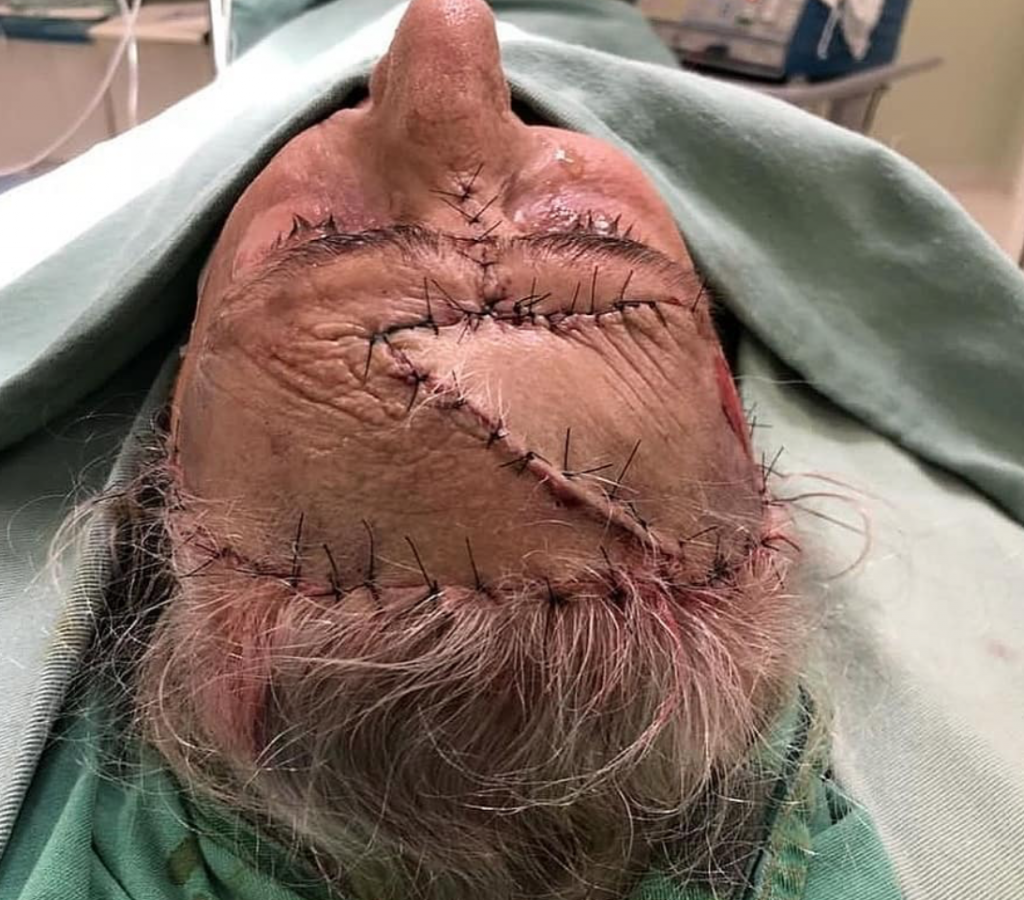This patient underwent a Mohs micrographic surgery to treat her condition, which involves a sequential removal of thin skin layers with microscopic inspection to confirm that the margins have been cleared of malignant tissue.

This technique has the highest cure rate for basal cell carcinomas and in smaller lesions it provides the least disruption to surrounding tissues, making it ideal for delicate areas such as the perioral region, nose, lips, ears and in this case, scalp. Flap surgery, shown in last two photos followed shortly after to cover the defect.

Squamous cell carcinoma is a type of skin cancer that
Source: @medicalpedia




